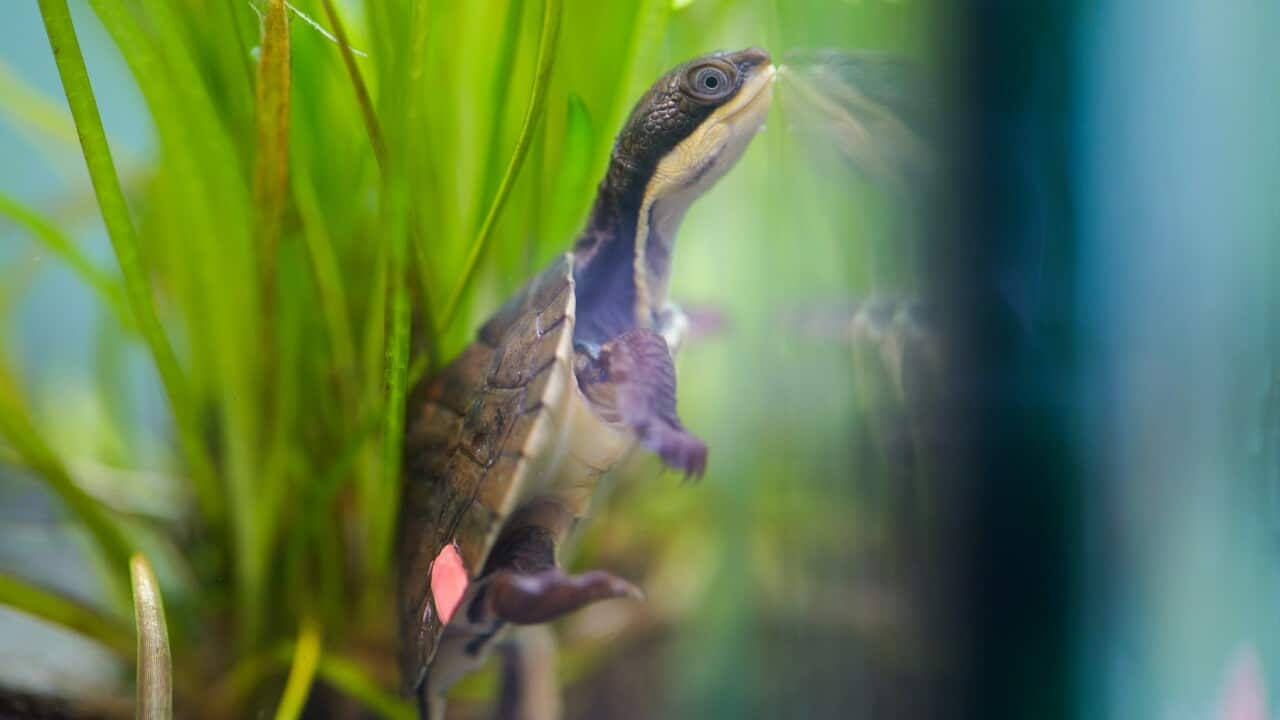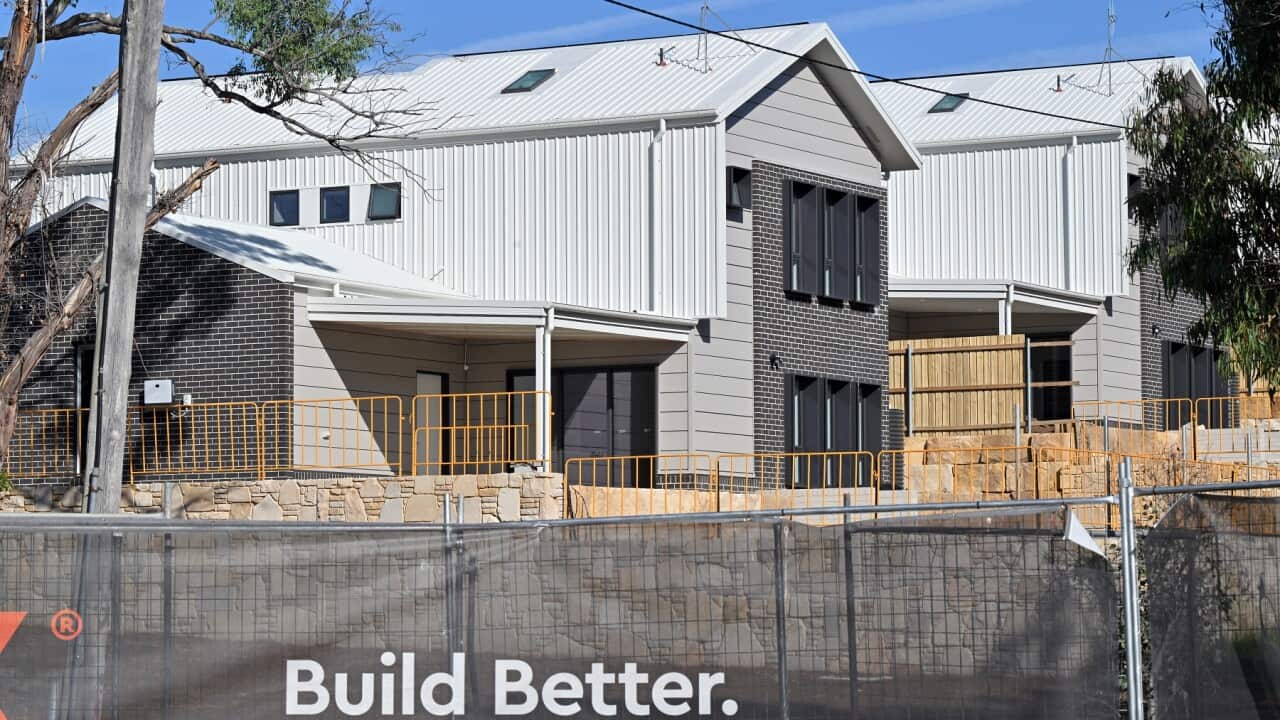Italian
UPSOT - WALKING OVER LAKE HART
L’anziana Kokatha Elaine Kite sta visitando le sponde settentrionali del Lake Hart per la prima volta.
Lake Hart mantiene un profondo significato culturale per le popolazioni Kokatha, connettendole con le storie mitologiche dei loro antenati.
Ma questa parte del lago è solitamente interdetta. Si trova all’interno della Woomera Prohibited Area, un enorme poligono di tiro militare nell’outback del South Australia – a circa sei ore a nord-ovest di Adelaide.
“It's a pain that we feel in our spirit. It's about what's happening on country, we don't always get to see it. To stand here on the edge of the lake, there's that feeling that we have. It's powerful to be able to look across this, but knowing full well that there's damage there.”
UPSOT - MISSILE BEING FIRED AT LAKE HART
L’Australian Defence Force per anni si è servita di Lake Hart per collaudare missili e armamenti. La superficie del lago è stata utilizzata come zona d’impatto per esplosivi.
Questi rumori provengono da un’esercitazione di tiro a Lake Hart nel 2018.
UPSOT - GUNS BEING FIRED
Ora Kite raccoglie i bossoli sparati lasciati sparsi sul terreno.
“To see all the spent shells and the bits and pieces, you think... wow. It's an indication of just what happens here when we're not around. And when you see this you know it's in your spirit. It's not good.”
Sono stati identificati diversi siti culturali importanti nell’area di Lake Hart. Vi si trovano incisioni rupestri, fondamenta di capanne in pietra utilizzate per rifugio e moli usate per creare attrezzi.
L’archeologo Neale Draper ha dichiarato che i siti Kokatha trovati all’interno della Woomera Prohibited Area sono straordinari.
“There's a very strong need to conserve and look after that. It's very, very important to Kokatha people and other western desert people. It's all part of the Tjukuroa and the other dreaming tracks that run right through the western desert.”
Secondo i documenti interni ottenuti da SBS News, l’Australian Defence Force dovrebbe evitare certi siti importanti dal punto di vista culturale nella zona di Lake Hart.
Nonostante ciò, nel gennaio 2021 venne trovato il corpo di un missile anti-aereo Saab nel mezzo di un’area protetta chiamata Lake Hart West. Ci vollero 12 mesi per i militari per recuperare il missile e ancora non c’è una spiegazione su come sia arrivato lì.
L’avvocato John Podgorelec ha presentato una denuncia contro Saab, sotto le linee guida internazionali gestite dalla O-E-C-D.
La denuncia accusa sostanzialmente Saab di non aver rispettato gli obblighi di dovuta diligenza prima che il missile venisse venduto all’esercito australiano e collaudato a Lake Hart.
“Simply, we're looking to have the OECD due diligence guidelines complied with. Specifically, what that means in this case is, we're looking for measures to be put in place so that the sites can be protected.”
John Pace è l’ex segretario della Commissione delle Nazioni Unite per i dDiritti dell’Uomo. Ritiene che il trattamento dei siti patrimonio culturale aborigeno tende all’orribile.
“In this area of Indigenous heritage protection it is remarkably in your face. What is, in fact, a very serious issue of devastation that's taking place.”
Il ministro della Difesa ha dichiarato che Lake Hart è riconosciuto sotto un piano di gestione dei siti protetti, sviluppato insieme ai Proprietari Tradizionali.
Saab non ha voluto commentare, ma in precedenza aveva dichiarato che la vendta di ordigni all’Australia è soggetta a stretta supervisione.
In piedi sulle rive che danno su Lake Hart, l’anziano Kokatha Andrew Starkey è in preda allo sconforto. Per lui il lago è stato profanato.
“Lake Hart is a pretty significant area, not just for the Kokatha people, but for other people from the south, to the west and to the north. It links us all together through the Tjukurpa, through the different storylines. There's engraving sites, there are stone arrangements, it's a very important place culturally. It just breaks our heart to see it desecrated in this way.”
English
UPSOT - WALKING OVER LAKE HART
Kokatha elder Elaine Kite is visiting the northern banks of Lake Hart for the first time.
Lake Hart holds a deep cultural significance to the Kokatha people, linking them to the storylines of their ancestors.
But this part of the lake is usually off-limits. It lies within the Woomera Prohibited Area, a massive military firing range in outback South Australia - about six hours northwest of Adelaide.
“It's a pain that we feel in our spirit. It's about what's happening on country, we don't always get to see it. To stand here on the edge of the lake, there's that feeling that we have. It's powerful to be able to look across this, but knowing full well that there's damage there.”
UPSOT - MISSILE BEING FIRED AT LAKE HART
The Australian Defence Force has for years used Lake Hart to test missiles and weapons. The surface of the lake has been used as an impact zone for explosives.
These sounds are from a live firing exercise held at Lake Hart in 2018.
UPSOT - GUNS BEING FIRED
Now, Ms Kite picks up the spent bullet casings left scattered across the ground.
“To see all the spent shells and the bits and pieces, you think... wow. It's an indication of just what happens here when we're not around. And when you see this you know it's in your spirit. It's not good.”
A number of important cultural sites have been identified in the Lake Hart area. There are rock engravings, the foundations of stone huts used for shelter, and grinding stones used for tool making.
Archaeologist Neale Draper says Kokatha sites found inside the Woomera Prohibited Area are remarkable.
“There's a very strong need to conserve and look after that. It's very, very important to Kokatha people and other western desert people. It's all part of the Tjukuroa and the other dreaming tracks that run right through the western desert.”
According to internal documents obtained by SBS News, the Australian Defence Force is meant to avoid certain culturally-significant sites in the Lake Hart area.
However, in January 2021, the body of a Saab anti-aircraft missile was discovered in the middle of a heritage area called Lake Hart West. It took the military 12 months to retrieve the missile, and there is still no explanation how it got there.
Lawyer John Podgorelec is leading a complaint against Saab, under international guidelines administered by the O-E-C-D.
The complaint broadly alleges that Saab failed to complete its due diligence obligations before the missile was sold to the Australian military and tested at Lake Hart.
“Simply, we're looking to have the OECD due diligence guidelines complied with. Specifically, what that means in this case is, we're looking for measures to be put in place so that the sites can be protected.”
Dr John Pace is the former secretary of the United Nations Commission on Human Rights. He says the treatment of Aboriginal heritage sites in Australia verges on appalling.
“In this area of Indigenous heritage protection it is remarkably in your face. What is, in fact, a very serious issue of devastation that's taking place.”
The Defence Department says Lake Hart is recognised under a heritage management plan, developed with Traditional Owners.
Saab declined to comment, but has said previously the sale of ordnance to Australia is subject to strict oversight.
Standing on the banks looking over Lake Hart, Kokatha elder Andrew Starkey despairs. He says the lake has been desecrated.
“Lake Hart is a pretty significant area, not just for the Kokatha people, but for other people from the south, to the west and to the north. It links us all together through the Tjukurpa, through the different storylines. There's engraving sites, there are stone arrangements, it's a very important place culturally. It just breaks our heart to see it desecrated in this way.”
Report by Steven Trask




